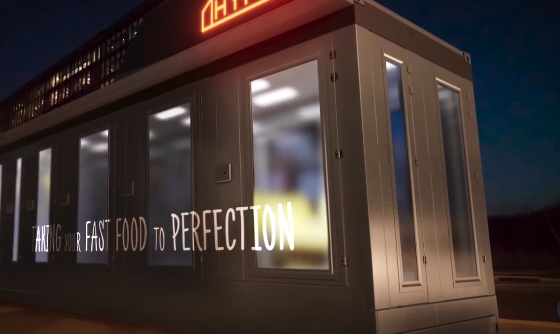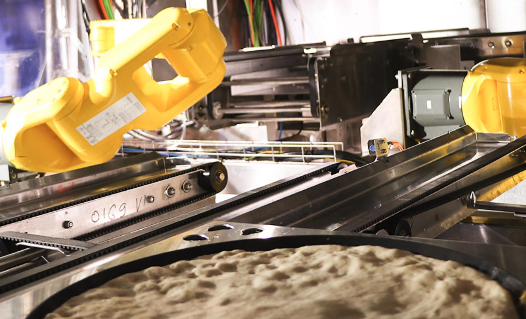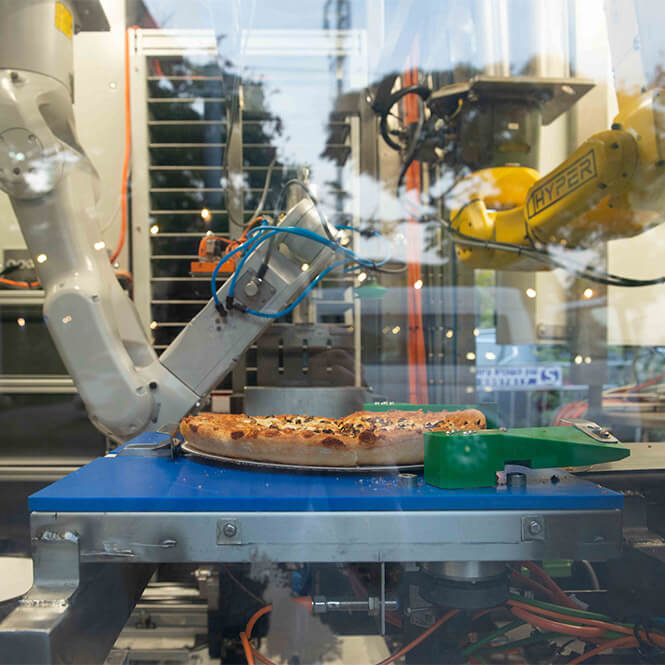Why Are You Still Waiting?
You have a growth plan. You also have a hiring problem, construction delays, and a delivery surge you cannot catch up with. The longer you wait to automate, the more market share you hand to competitors who figured out how to scale without waiting for perfect labor markets or brick-and-mortar leases. Plug-and-play autonomous restaurants, the kind that ship in 20- or 40-foot containers and arrive ready to operate, change the math. They let you open revenue-generating locations in weeks, cut the variability that eats your margins, and capture late-night and delivery demand without burning through payroll.
This article lays out the case for immediate automation. You will get a clear roadmap, a list of mistakes to stop making now, the tech details that matter, real examples, and a five-step plan to take your first pilot to a fleet. You will also find links to detailed background on plug-and-play deployment and notable industry experiments to help you make the case to your board.
Table Of Contents
- The Growth Paradox For Fast-Food Brands
- What Plug-And-Play Autonomous Restaurants Actually Mean
- How Automation Solves Growth Challenges (Core Benefits)
- Under The Hood: Technology That Delivers Real-World Results
- ROI And Economics: What To Measure And Why
- Stop Doing This: Habits And Strategies To Abandon Now
- Your 5-Step Roadmap To A Successful Pilot And Scale
- Addressing Common Objections And Risk Controls
The Growth Paradox For Fast-Food Brands
You see demand rising for delivery and off-premise orders. At the same time, hiring is harder, turnover remains high, and new store builds take months of approvals and construction. That creates a paradox. You want to scale where demand exists, but your platform for growth is slow and fragile. Every delayed opening costs you immediate revenue and long-term brand momentum.
Labor issues are not abstract. They hit margins, training budgets, and customer experience. A single bad shift can damage a location’s reputation for months. Meanwhile, delivery platforms are expanding footprints and customers are comfortable with delivery-first brands. If you do not move faster to capture those orders, someone else will.
What Plug-And-Play Autonomous Restaurants Actually Mean
You need a practical definition you can sell internally. Plug-and-play autonomous restaurants are self-contained kitchens built into modular containers. They arrive preconfigured with hardware, software, and a curated menu that can be integrated with your POS and delivery APIs in a matter of days or weeks. You do not wait for a general contractor and a crew. You plug in power and data, integrate one API, and you can begin selling.
Hyper-Robotics documents this model clearly in their knowledge base, explaining how a prebuilt, containerized form factor combined with a curated hardware stack and integrated software platform accelerates rollout timelines. See the detailed explanation in the Hyper-Robotics knowledge base: [Why Hyper Food Robotics plug-and-play model accelerates your fast-food chain growth].
You can measure the difference. A traditional buildout can take three to nine months and cost hundreds of thousands more than a container-based deployment. A plug-and-play unit can be revenue-producing in weeks, with predictable CAPEX and a repeatable integration checklist.
How Automation Solves Growth Challenges (Core Benefits)
Speed to market and rapid scaling
You want to be where demand is, fast. A 20- or 40-foot autonomous unit lets you test neighborhoods, events, campuses, and delivery hotspots without a long lease. You can open new locations at a fraction of the time and cost.
Consistency, QA, and food safety
Machine vision and sensors enforce recipes to the degree that humans rarely do. That yields consistent quality and fewer order errors, which matters for brand trust. Robotics also reduces human contact with ready-to-serve food, improving hygiene and lowering contamination risk.
24/7 operations and demand capture
You cannot staff every late-night window at profitable rates. Robots can operate around the clock, capturing orders that would otherwise be lost to competitors.
Reduced food waste and sustainability wins
Automation portions precisely and tracks inventory in real time. That reduces waste and shrink. Cleaner processes also support stronger sustainability claims to investors and regulators.
Labor resilience and cost mitigation
Automation removes the single biggest variable in your cost structure, local labor availability. You still need human oversight, but you cut the hours spent on repetitive prep and assembly. That translates into predictable labor metrics and lower training costs.
Under The Hood: Technology That Delivers Real-World Results
Ask for specifics, not buzzwords. Require sensor counts, camera arrays, and the software stack. Leading plug-and-play units combine dozens to hundreds of sensors with 20 or more AI cameras to verify assembly, measure temperatures, and run quality checks. Edge computing makes split-second decisions, while cloud analytics manage fleet health and inventory across locations.
These platforms often include patentable dispensers, robotic arms for assembly, and validated sanitization cycles to meet health department standards. Remote telemetry and cluster management let you operate multiple units as a single fleet and shift inventory or menus regionally, based on demand data.
If you want context on how robotics are already changing fast-food tasks, look at recent deployments such as ABB FlexPicker robots being used in patty assembly lines to speed and standardize topping placement. For a concrete media example, see the New York Post coverage of a California burger joint using ABB robots to speed assembly and reduce human handling: [California burger joint brings robots onto the patty assembly line].
Industry commentary also highlights the broader value of robotics for consistent quality and freeing skilled staff to focus on creative tasks. For an overview of restaurant automation options and how they solve modern challenges, consult this industry guide: [Restaurant automation solutions and where to find them].
ROI And Economics: What To Measure And Why
You will be judged on metrics. Make them blunt and measurable. For pilots, track:
- Orders per hour, to prove throughput gains.
- Order accuracy, to show decreased refunds and re-makes.
- Labor hours saved, to quantify FTE reduction or redeployment.
- Food waste percentage, to show inventory control and cost savings.
- Uptime and mean time to repair, to show operational resilience.
The first-order ROI is labor savings and longer operating hours. The second-order ROI comes from faster market entry and the ability to test new neighborhoods without a major CAPEX commitment. Over time, clustered deployments create network effects: shared inventory, centralized monitoring, and analytic-driven menu optimization.
Stop Doing This: Bad Habits And Strategies You Should Stop Immediately
Stop relying on manual hiring cycles as your growth strategy. You will lose pace.
Stop assuming every restaurant format must be permanent real estate. Containers can be mobile or redeployed.
Stop treating automation as experimental theater. If the promise is consistency and scale, test rigorously and then roll fast.
Stop letting a single bad recruitment cycle define your brand expansion plan. Use automation to stabilize operations.
Stop over-customizing the pilot menu. Keep the menu focused so metrics are clean and repeatable.
Your 5-Step Roadmap To A Successful Pilot And Scale
Here is your five-step roadmap to launch a plug-and-play autonomous restaurant and scale with confidence. Follow it to reduce risk, measure what matters, and create a repeatable playbook.
Step 1: The Starting Point, define the pilot objective and baseline metrics
Why it matters: Clear goals make the pilot a business experiment, not a demo. Set orders per hour, accuracy target, labor hours saved, and acceptable uptime. Example: aim for a 30 percent reduction in labor hours for assembly tasks and an initial throughput target of 60 orders per hour. Actionable advice: pick a single site with strong delivery demand and minimal permitting friction.
Step 2: Integration and systems prep
Why it matters: A pilot fails when integrations fail. Ensure POS mapping, menu SKU standardization, and delivery API integration are completed in advance. Example: integrate with your primary aggregator first, and use the aggregator’s test environment. Actionable advice: map every API call and test end-to-end before launch day.
Step 3: Narrow menu and rigorous validation
Why it matters: The fewer moving parts, the clearer the signals. Run a stripped-down menu focused on repeatable items that robots can execute perfectly. Example: burgers with fixed toppings, fries, and a limited beverage set. Actionable advice: perform blind quality tests versus staffed locations to prove parity.
Step 4: Live operations and data collection
Why it matters: Data tells you what to scale. Track throughput, error rates, ticket times, and customer feedback in real time. Example: operate two weeks in observation mode, then push for a full week of peak hours to test stress conditions. Actionable advice: use remote telemetry and set thresholds for automatic alerts and human intervention.
Step 5: Iterate and scale with a clustered deployment plan
Why it matters: Scale is a systems problem. Cluster units regionally to share inventory and analytics. Develop a territory map based on delivery density. Example: move from one pilot unit to a cluster of three within a single metropolitan region, then scale nationally with replicated playbooks. Actionable advice: create a rollout cadence and pre-approve sites to reduce decision lag.
Addressing Common Objections And Risk Controls
Food quality and brand identity
You will hear that robots cannot reproduce your brand’s soul. They can, if you design finishing touches into the workflow and use automation where consistency matters most. Many brands preserve hand-finished elements for premium lines and automate high-volume staples.
Regulatory and health inspections
Plug-and-play units are designed with cleaning cycles, logged temperature data, and auditable records. Keep those logs and work with local inspectors early in the pilot to remove surprises.
Customer acceptance and perception
Customers care about speed, price, and consistency. Use clear communication and position robot-prepared items as precision-made. Early adopters reward novelty, and most customers quickly accept automation if the food and delivery are reliable.
Security and data privacy
Ask about encryption, firmware update processes, and incident response plans. Secure-by-design systems will reduce operational risk and protect customer data.
Key Takeaways
– Start with a focused pilot and measurable KPIs, such as orders per hour and labor hours saved, to evaluate automated units quickly.
– Use plug-and-play containerized units to cut time-to-market from months to weeks, enabling rapid entry into high-demand neighborhoods.
– Measure both first-order (labor and hours) and second-order (delivery capture, reduced waste) ROI for a complete picture.
– Stop treating automation as experimental theater, and stop tying expansion to fragile labor markets or long construction cycles.
– Integrate with POS and delivery APIs before launch and use cluster management to scale predictably.
FAQ
Q: How long does it take to get a plug-and-play unit operational on site?
A: Typical timelines vary, but a core benefit of the plug-and-play model is speed. Many deployments can be online in weeks once the unit arrives, provided power and data are available and POS/delivery integrations are complete. Plan for integration testing and a short validation period. Use a pre-launch checklist to reduce surprises during the first revenue day.
Q: What parts of the menu are best suited to automation?
A: Repetitive, assembly-line items perform best. Burgers, pizzas, bowls, fries, and certain beverages are ideal candidates because robots excel at repeatable actions. You can preserve brand identity with finishing touches, premium options, and packaging. Start with high-volume, low-variance items to prove metrics.
Q: How do you handle maintenance and downtime?
A: Service models combine remote telemetry with local technician networks and SLAs for parts and response. Design your pilot with redundancy and clear thresholds for human takeover. Track mean time to repair and uptime in your KPI dashboard to make data-driven decisions on spare parts and service contracts.
Q: What cybersecurity considerations should I require?
A: Demand encryption, authenticated firmware updates, and an incident response plan. Verify the vendor’s security posture, ask for SOC2 or ISO 27001 evidence if available, and ensure telemetry channels are protected. Secure operations prevent both data leaks and service disruptions.
About Hyper-Robotics
Hyper Food Robotics specializes in transforming fast-food delivery restaurants into fully automated units, revolutionizing the fast-food industry with cutting-edge technology and innovative solutions. We perfect your fast-food whatever the ingredients and tastes you require. Hyper-Robotics addresses inefficiencies in manual operations by delivering autonomous robotic solutions that enhance speed, accuracy, and productivity. Our robots solve challenges such as labor shortages, operational inconsistencies, and the need for round-the-clock operation, providing solutions like automated food preparation, retail systems, kitchen automation and pick-up draws for deliveries.
Final thought
You are deciding between waiting for perfect conditions and seizing a clearly available advantage. Plug-and-play fast-food robots let you expand faster, run cleaner, and scale with predictable economics. If you want to stop losing late-night and delivery demand, what will you automate first?






